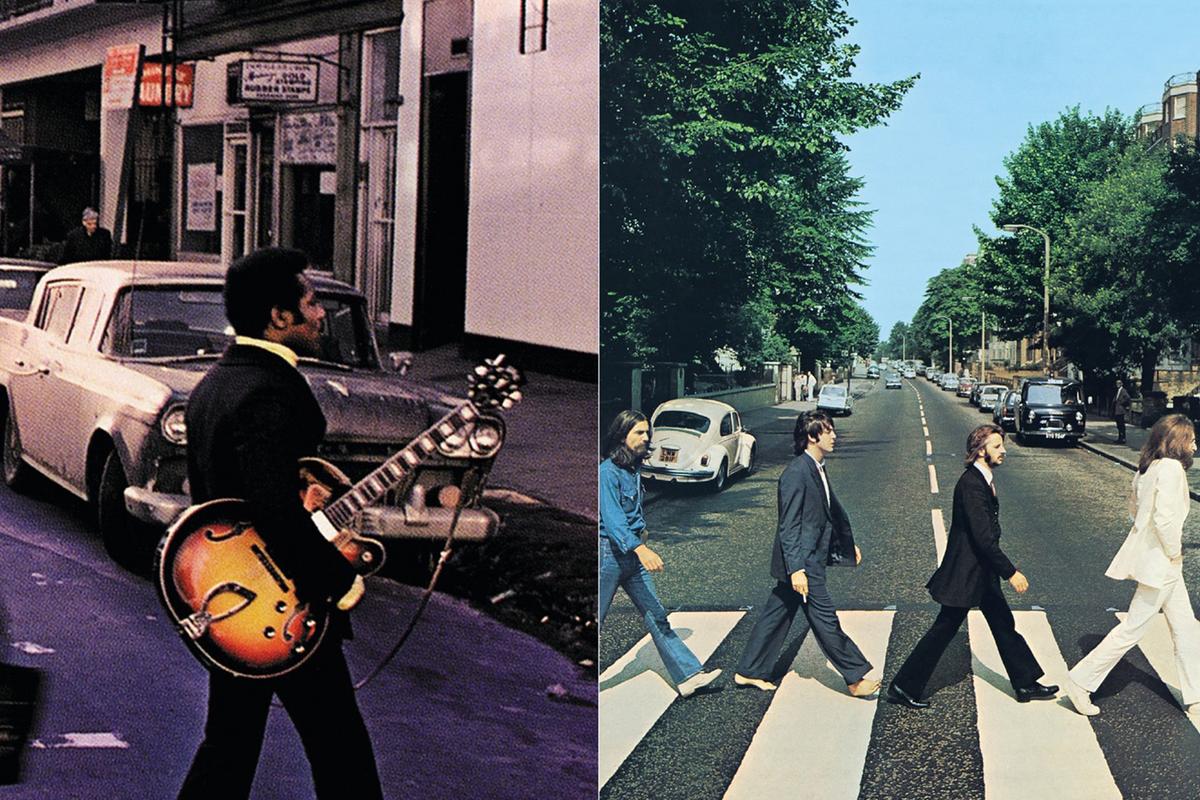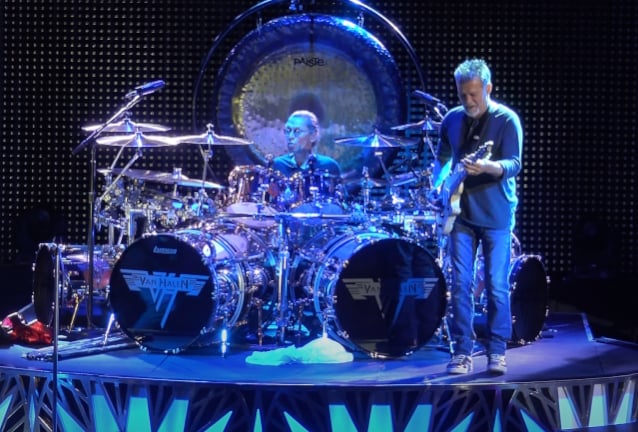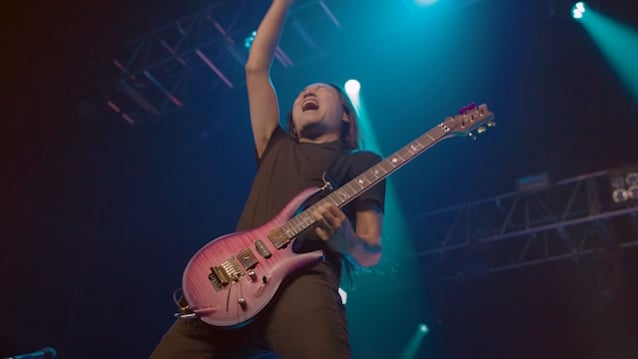The Beatles released their classic Abbey Road in late 1969. Less than a year later, George Benson revealed his own take on a number of songs from the record, cleverly titled The Other Side of Abbey Road.Backed by a now-legendary cast of characters from the jazz world, including Herbie Hancock and Bob James, The Other Side of Abbey Road offers a really cool and at times, funky, alternate view of what the Abbey Road songs could have sounded like.As James tells UCR now, the reaction to what he had done in 1970 was not good, but he was happy he did it. “It actually boosted my career,” he says. “It’s one of the best records I think I’ve ever made.”Paul McCartney agreed, as word filtered back to Benson. “Man, we love what you did with our music.Though Benson would become a superstar in the jazz world, he’s always — and continues to find himself crossing multiple genres with his music. Peter Frampton was an early fan — and one who eventually inspired Benson to reexamine his own musical process. He also tackled songs by Leon Russell and James Taylor and worked with countless musicians on his recordings, including the members of Toto.Toto’s Steve Lukather is one of the many impressive guitarists who will join Benson in January for his inaugural Breezin’ With the Stars, an immersive four day musical event happening in Phoenix. During a recent phone conversation, Benson shared some great stories from across his career.Breezin’ With the Stars seems like it’s going to be so much fun. What are you hoping that people are going to take away from the experience?With a thing like that, you never know. Because those guys have such a reputation themselves and they are among the top guitar players of our time! I’m there for the same reason they are — trying to add to my resume, or my collection of ideas. Tunes and things. Most of the guys there, I know personally. But I never see them in one shot together, so it makes it really unique.There’s an incredible spread of players, guys like Steve Lukather, John Scofield and Lee Ritenour, just to name a few. What’s striking to me about the lineup is it feels very true to the varied spirits of the collaborations that have colored your own career.No doubt about it, man. When they tell me I’m going to play with any one of those guys, or even in the same town, we try to hook up and check each other out! I always hear something or learn something that I didn’t know yesterday. Because I’m still interested. As a guitar player, I’m never bored with other guitar players. There’s always something that another guy’s doing that you never thought of. So you say, Well how come I didn’t think of that first! [Laughs] I’m really looking forward to it. I think the people who come there are going to see us from a point of view that they might not have seen us [do] before.I’m here in Cleveland. You worked with the late Tommy LiPuma on a number of your records. What did he add to your process that you liked?He reminded me of the greatest producer of jazz records in history and that was Mr. John Hammond of Columbia Records. Tommy, like him, did not bother me about my playing, at least in the early days. [Laughs] He just said, “Man, go in there play! Whatever you like!” He brought me songs, that was the difference between him and John. he said, “Have you ever heard of a guy named Leon Russell?” I said, “No.” He said, “Do you know the song, ‘This Masquerade’”? I said, “No.” He said, “I’m going to send it to you.” So he sent it to me and I didn’t listen to it. Then, he called me back, “Well, how’d you like that song?” I said, “What song?” He did that three times before I decided to listen to it! I listened to it, because the keyboard player, Jorge Dalto, and his wife came to visit me at my house.I was telling him about the new record that I was getting ready to do and he was going to be a part of it. I mentioned “This Masquerade” and his wife said, “Oh, that’s my favorite song and that’s my favorite artist, Leon Russell!” I said, “How in the heck can she know about something in the music business that I don’t know!” Because at that time, I didn’t know she was a singer! [Benson chuckles] So I decided to listen to the song. I listened to it and I learned it. We got to the studio and we did one take of that song, because Tommy LiPuma decided he was not going to put a vocal on this wonderful instrumental album that we had just finished. He said, “No, it does not need a vocal, I don’t want a vocal on it.” I said, “Well, man, you made me learn this crazy song! We’ve got to record it at least once.” And so we did. One time, one take. Everybody that heard it after that said, “Dang, man, first of all, who’s that singing? Man, you gotta put that out.” Tommy said, “No,” and then they pressured him and he said, “Okay.” He played it for the record company and they said, “When can we get that? We want it now!”But Tommy LiPuma himself, changed my whole life. He made me do something I hardly ever thought about. Tune the guitar up. In the middle of the song, he’d stop us and say, “George, check your tuning.” It became annoying at first, but then I realized [he was right] when I heard it back. I couldn’t tell what was wrong with the song before because I was so used to hearing myself play out of tune, I guess. After that, everything sounded right. He covered that by paying attention and then he had the great engineer with him, Al Schmitt. Al made that album a must-have in your collection if you were an audiophile. I had all of that going for me and I had the brand new guitar that I had just purchased from a brave young man who went to his girlfriend’s former boyfriend’s house and told him he had to give up the guitar she bought him. I said, “Man, that guy has a lot of nerve. He’s got a lot of heart!” He didn’t know anything about guitars, so he brought it to the house and sold it to me and that was the guitar I used on Breezin’. I’d never played it before in my life except on that record. I also had a Polytone amplifier. They rolled one in for me, fresh off the press and that sound became the Breezin’ sound. People heard me play in a way they’d never heard before and the record just went to the moon.Listen to George Benson’s Version of Leon Russell’s ‘This Masquerade’That guitar is one of the ones you’re about to sell in your new official Reverb shop. I like the idea that you’re looking at the chance for these instruments to bring new magic to other players like they have for you.They’re like my relatives, like my babies, man! [Benson laughs, taking on a weepy tone] Take good care of my babies! I think you’re going to get the same joy that I had raising them, you know. Playing some new and interesting things on them, there’s just nothing like it. To realize that they’re in existence because of me, it makes me feel like a real father! And I am the father of seven boys, so I know what fatherhood is supposed to be anyway! It’s been great, man. I’m really hoping that they get out of those guitars the inspiration that they gave to me, to move to different heights in their career.How did you land on the concept of doing The Other Side of Abbey Road? It’s a fantastic record.I can tell you this, at that time for music, this is before the crossover period. I mean, stars are starting to pop up and playing crossover music, but it wasn’t popular yet. Probably the most popular crossover song was done by Ella Fitzgerald, [when she recorded] “Can’t Buy Me Love” [Benson sings a short section of the song]. It was like, “Wow, Ella Fitzgerald is singing a Beatles tune! She tore it up to show that it could be done, first of all — and it could be popular! Creed Taylor [record producer and label owner] invited me to his office one night and said, “George, take this home and listen to this record.” I took Abbey Road home and listened to it. I came back the next day and he said, “What do you think?” I said, “Man, everything on here is a monster.”He said, “Good! We’ll do the whole album!” I said, “What? The whole album! You’ve got to be kidding me! That will make me the enemy of the jazz world, man!” I already had conflict there, because my stuff was considered too commercial. But we got in the studio and the great arranger, Don Sebesky, arranged these beautiful things for a chamber orchestra. He invited New York’s top musicians from the New York Symphony Orchestra to play them with us. Man, I had to sing one of the first songs, “Golden Slumbers” and a lot of those guys had never heard me sing before. So they’re looking at me like I am crazy. “What? George is singin’, man!” We moved to the guitar part and the guitar part came out fairly well too. So Creed Taylor’s idea to do Abbey Road, it was a little too early [for what we did] with that album. But it became popular — like I knew it would, years later after Breezin’ came out. People went back and discovered The Other Side of Abbey Road and it actually boosted my career. I was glad that happened. It’s one of the best records I think I’ve ever made.Listen to George Benson’s Versions of ‘Golden Slumbers’ and ‘You Never Give Me Your Money’ by the BeatlesThe Stories Behind Every Beatles LP CoverIn some ways, the Beatles’ album art could be just as fascinating as the music inside. Gallery Credit: Nick DeRiso







